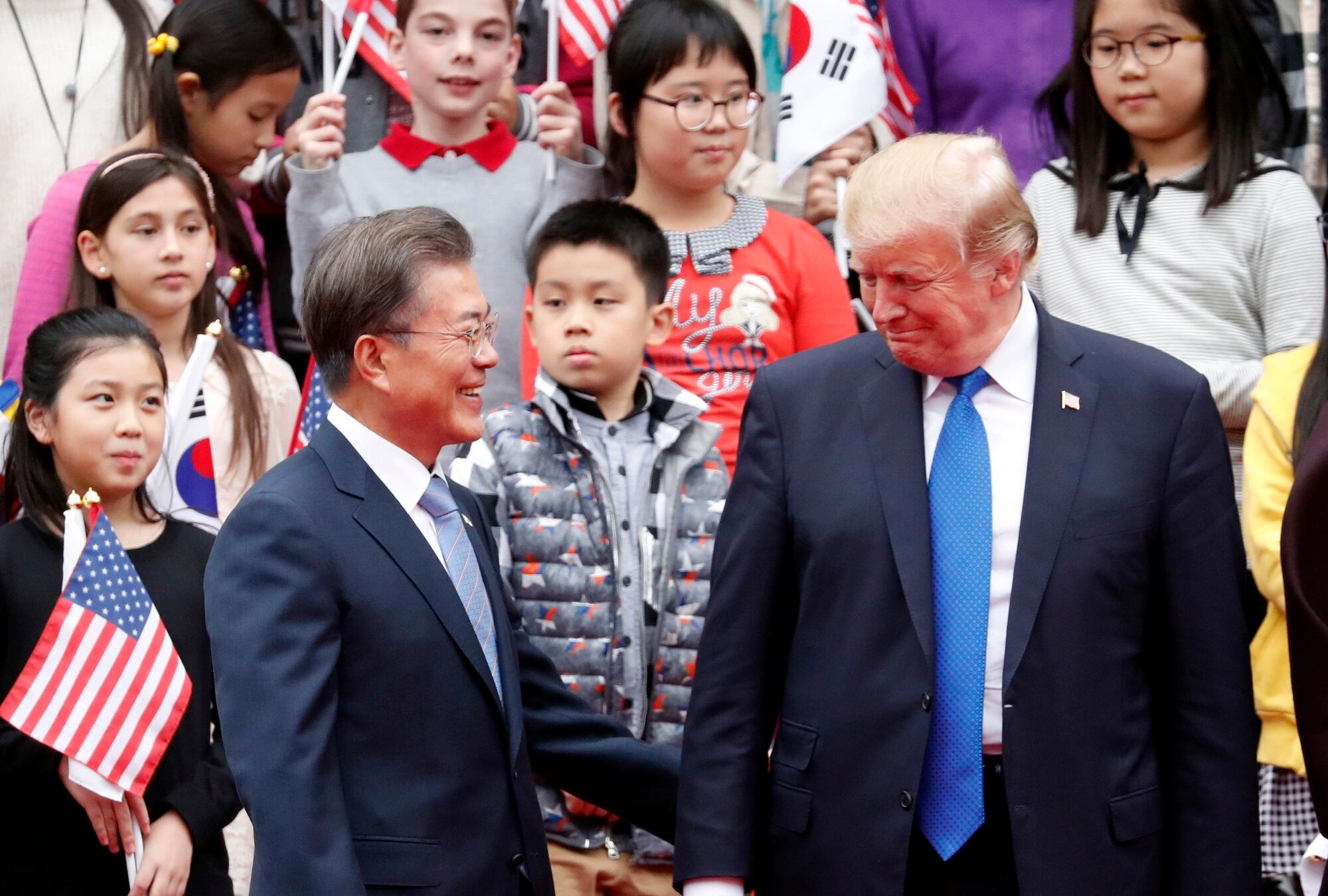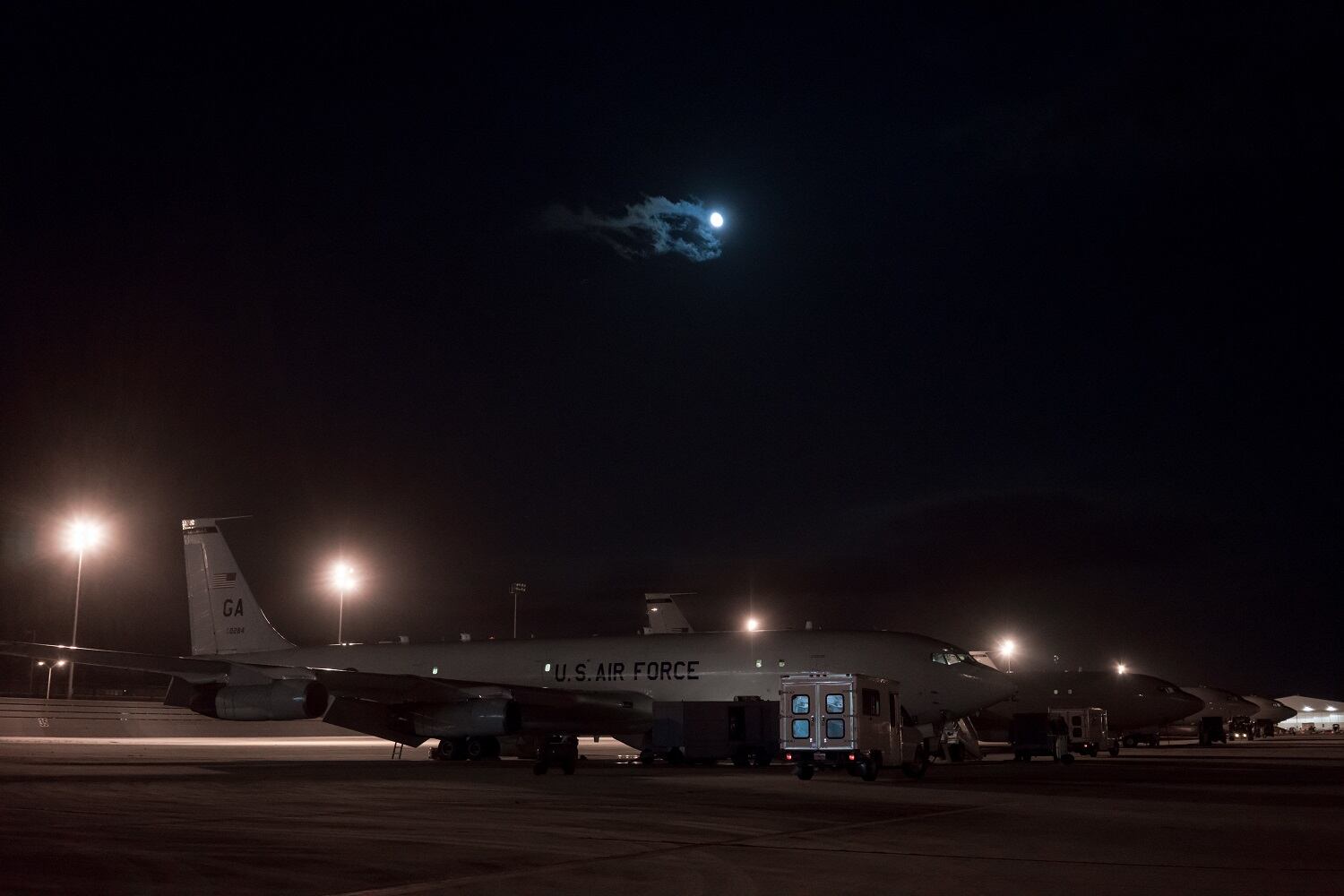MELBOURNE, Australia — South Korea is planning a raft of measures to step up its defense capabilities as U.S. President Donald Trump visits the key American ally against the backdrop of North Korea‘s nuclear ambitions.
This includes the acquisition of potentially billions of dollars worth of military hardware by the South Koreans, including the possibility of South Korea operating nuclear-powered attack submarines, more-capable missiles, as well as surveillance and targeting aircraft.
Trump and South Korean President Moon Jae-In have agreed to further strengthen the countries’ joint defensive posture and capabilities through the enhanced deployment of U.S. strategic military assets in and around South Korea on a rotational basis.
RELATED

Moon had indicated an interest in nuclear-powered submarines even before his election in May, and the topic was reportedly discussed during his meeting with Trump. However, details of those discussions were not revealed, and the Trump administration has not indicated that it is open to that idea.
South Korea’s interest in nuclear-powered submarines has been stoked by North Korea’s development of ballistic missile submarines capable of firing the KN-11, also known as the Pukguksong-1, submarine-launched ballistic missile, which has undergone testing during the North’s recent spate of missile tests.
The South Korean Navy currently operates a fleet of locally built diesel-electric submarines and is building more with the aim to reach 18 boats by 2019. However, a small fleet of nuclear-powered attack submarines will allow the service to conduct patrols for much longer periods than with conventionally powered boats.
Should South Korea acquire nuclear-powered attack submarines, either through an unlikely direct purchase from the U.S. or more likely through the development and production of an indigenous design with U.S. technical assistance, it would represent a significant shift in the country’s defense posture and stoke concerns with nuclear proliferation on the Korean Peninsula.
But significant obstacles to these ambitions remain. South Korea is a signatory to the Treaty on the Non-Proliferation of Nuclear Weapons, and the Asian nation is also prohibited from enriching uranium and reprocessing spent fuel for military purposes under a deal signed with the U.S. in 2015. The U.S. has also not sold nuclear-powered submarines and has not transferred such technology even to allies, and it is likely to loath doing so out of nonproliferation concerns.
Missiles and warheads
Where South Korea has found more luck is in an agreement with the U.S. for the development of missiles with heavier warheads. Trump acknowledged South Korea’s adoption of its recently revised missile guidelines to remove payload restrictions on its ballistic missiles, which will allow the missiles to attack targets such as the North’s underground bunkers and hardened artillery emplacements near the Demilitarized Zone that threaten South Korea’s capital Seoul.
This acknowledgement further cements the agreement Moon and Trump reached during a telephone call in September — shortly after North Korea’s sixth nuclear test — to no longer limit the weight of South Korea’s ballistic missile warheads.
South Korea has in recent years developed several types of ground- and sea-launched ballistic and land-attack missiles that allow it to reach anywhere in North Korea, but the previous payload limits that had restricted the warheads to no more than 500 kilograms will be removed.
Bolstering ISR
In addition, local media has flagged South Korea‘s interest in an airborne surveillance and targeting platform similar to the Northrop Grumman E-8 Joint Surveillance Target Attack Radar System, or JSTARS, currently operated by the U.S. Air Force for ground surveillance, target acquisition and communications relay.
RELATED

This will be part of a suite of improvements to South Korea’s intelligence, surveillance and reconnaissance capabilities, which will also include deliveries starting in 2018 for four Northrop Grumman RQ-4 Global Hawk unmanned surveillance aircraft along with the planned launch in 2019 of the first of five planned military satellites.
A potential South Korean acquisition of a JSTARS capability could complement the U.S. Air Force’s plans to recapitalize its own JSTARS fleet. As Defense News has previously reported, the service should have made a decision by now on what direction the program will take, although the decision will not be announced until the fiscal 2019 budget is released.
Mike Yeo is the Asia correspondent for Defense News.








